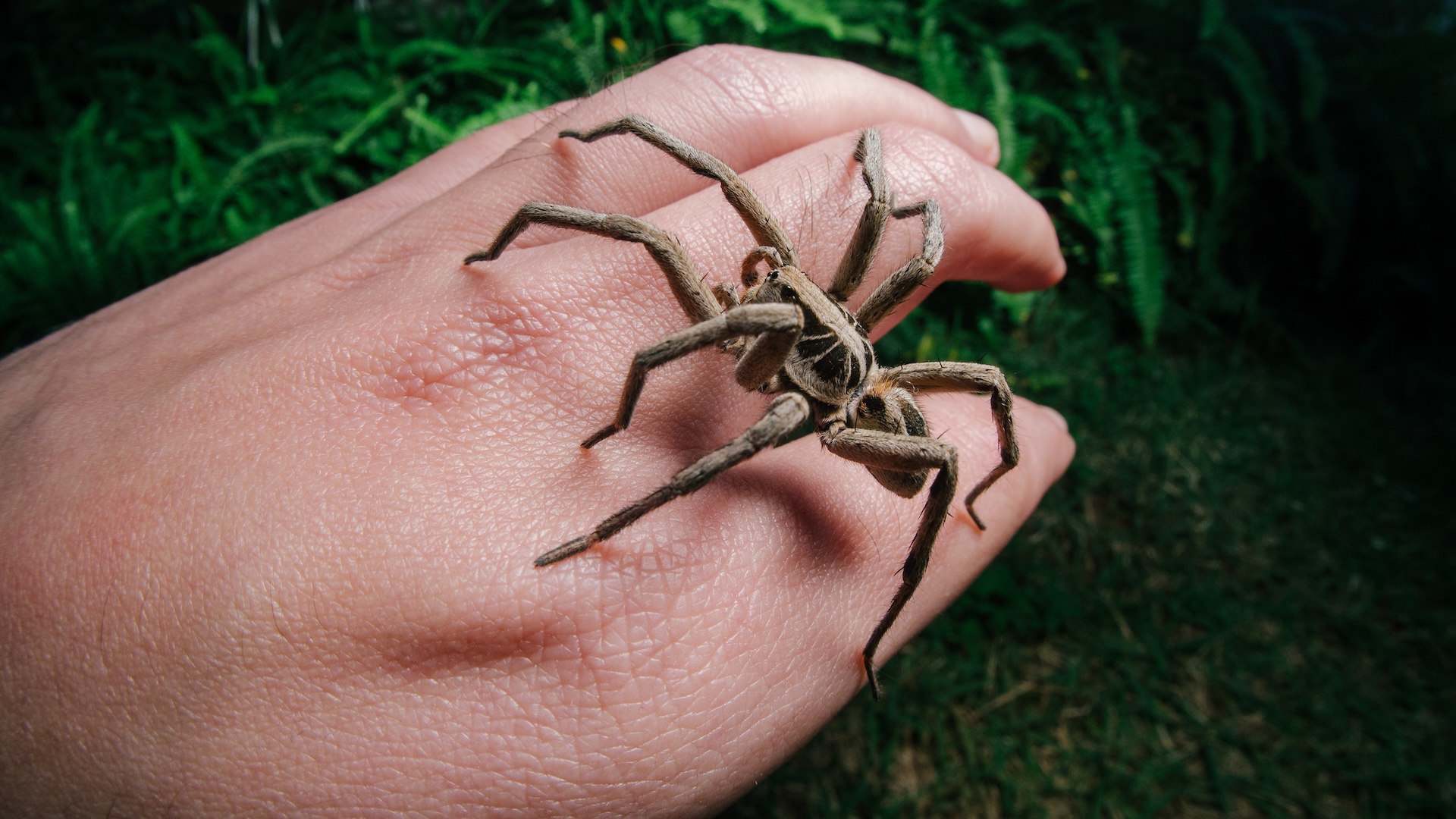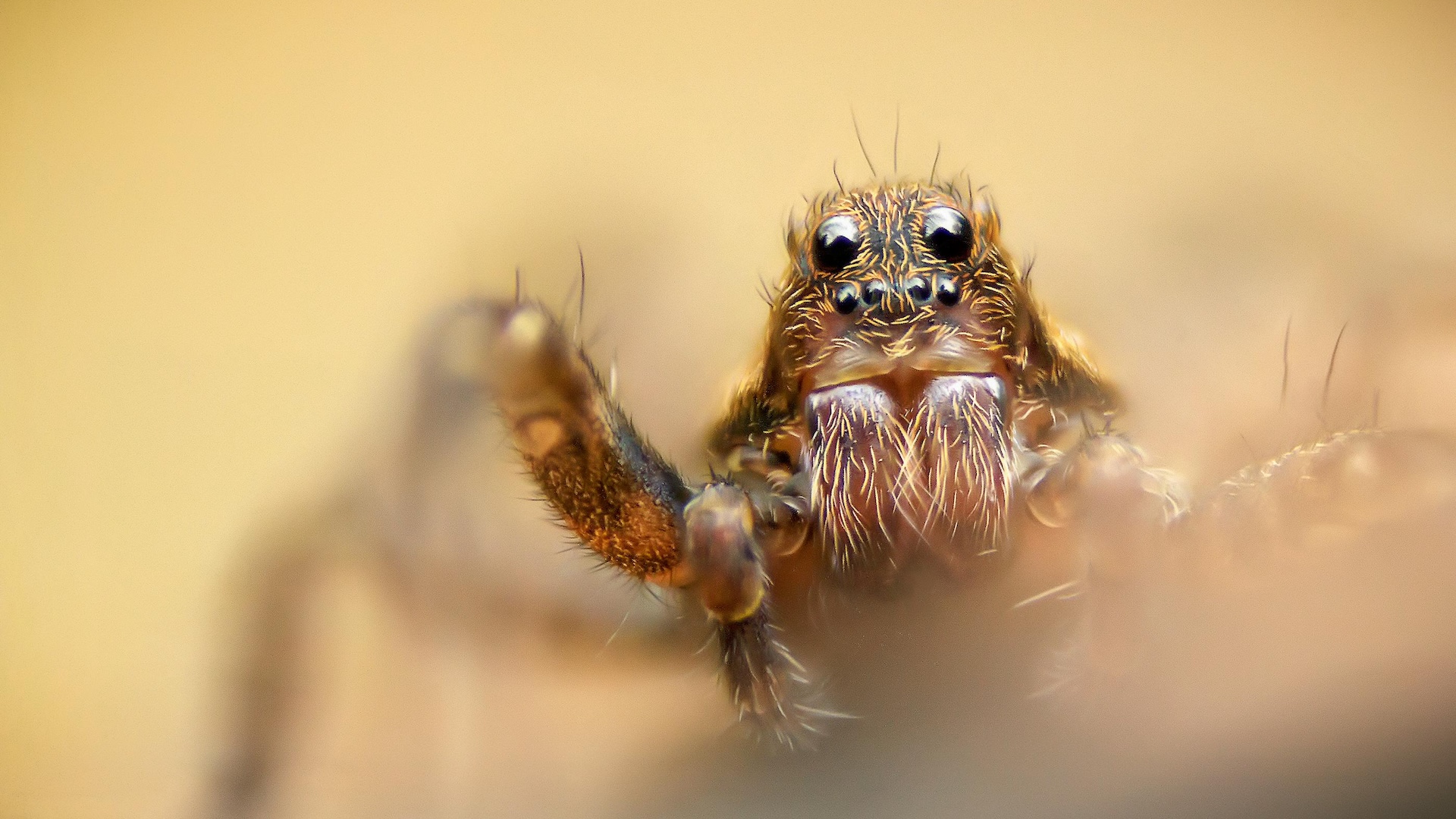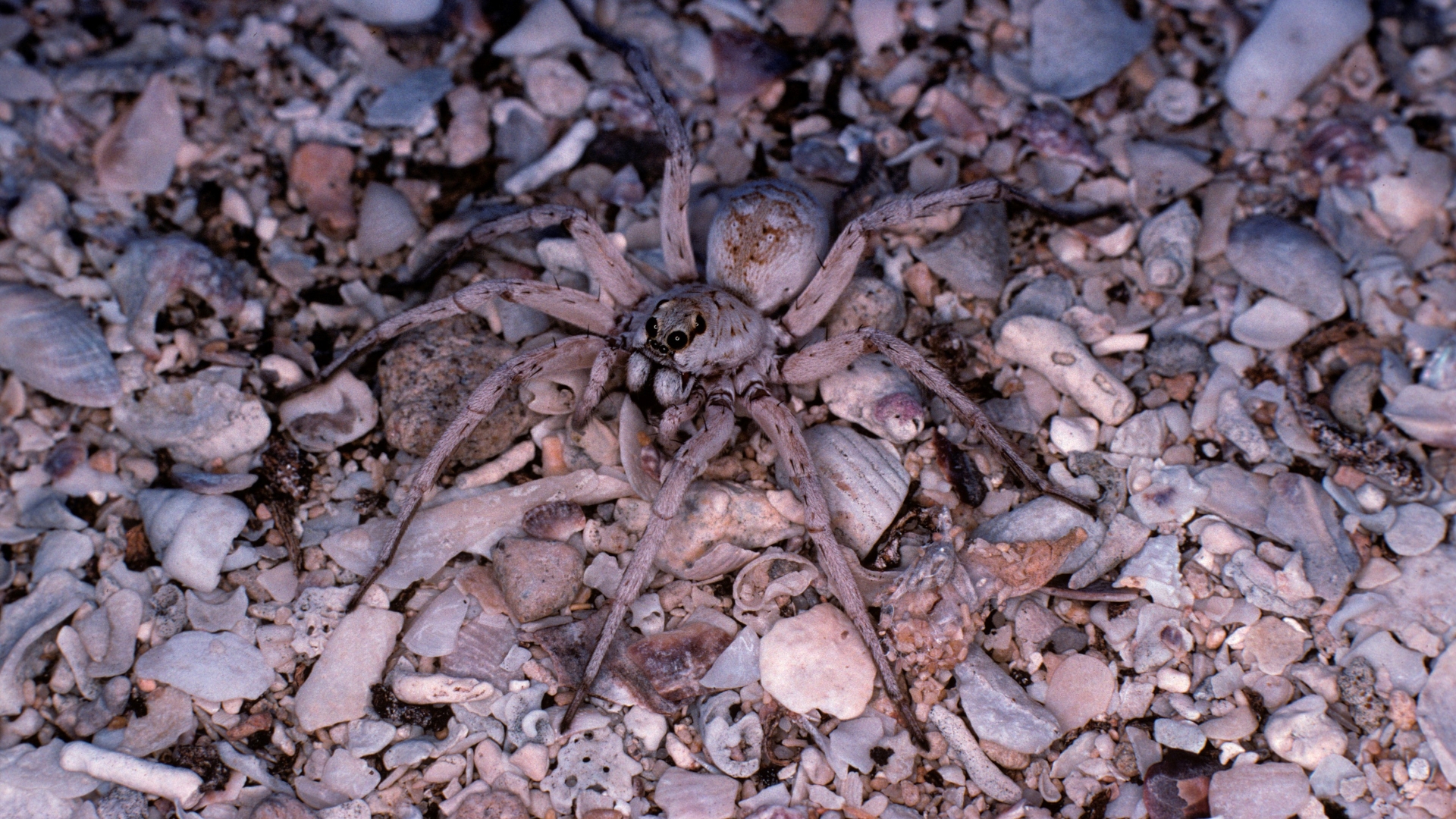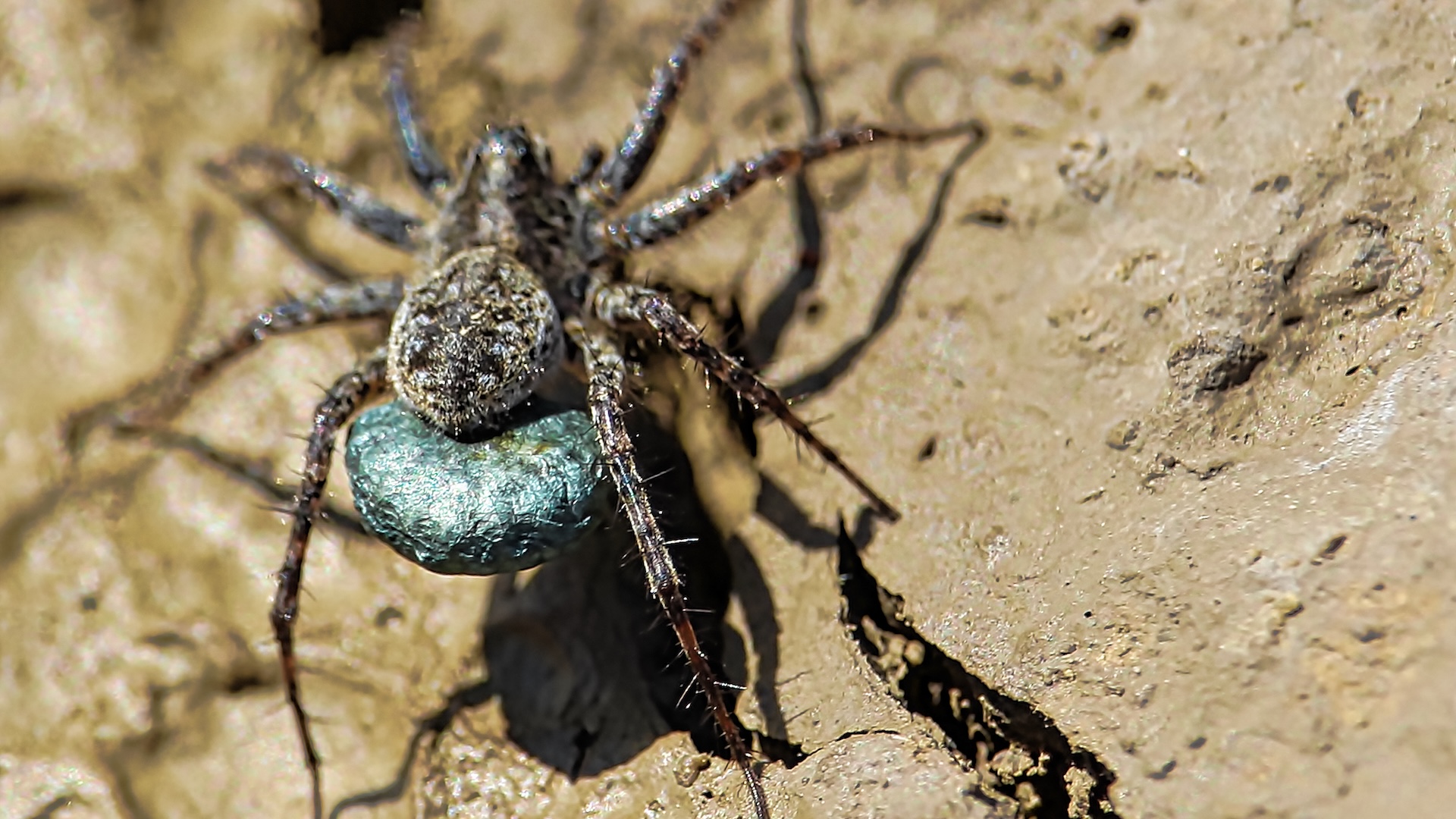Wolf spiders: Behavior, bites and other facts
Discover interesting facts about wolf spiders, how they hunt, what they eat and why they're named for the fierce creatures.

What they are: Hairy arachnids that stalk prey
Where they live: Every continent except Antarctica
What they eat: Mostly crickets and other insects, but big ones can eat small amphibians and reptiles
How big they are: As small as a rice grain or as big as a human hand
Wolf spiders are a family of mostly large, hairy and athletic arachnids. There are nearly 2,400 species of wolf spider that are found all over the world.
These spiders get their name from the way they hunt prey: Rather than spinning webs, these arachnids stalk prey like wolves do. Unlike wolves, however, wolf spiders don't hunt in packs; most are solitary creatures that hunt in the dark.
Wolf spiders are venomous, but their bites rarely cause people to become seriously ill.
And having these little arachnids around can be very beneficial. Because they eat insects like ants, bed bugs and cockroaches, they are considered a natural form of pest control around people's homes and gardens.
Fun facts about wolf spiders
- Wolf spiders have eight eyes: four little eyes and two pairs of bigger eyes above those. They use their amazing eyesight to hunt in the dark.
- Wolf spiders will bite you if they feel trapped, but their venom isn't deadly. Wolf spider bites can be painful.
- Brown wolf spiders can sometimes be confused for brown recluse spiders, which are extremely venomous and — in extreme cases — can result in seizures, kidney failure and death. If they're moving fast and out in the open, they're more likely to be wolf spiders. Brown recluses rarely venture out into open spaces.
Everything you need to know about wolf spiders
Why are wolf spiders called wolf spiders?
Rather than catching their prey in webs, wolf spiders chase it down, similar to the way a wolf does. However, these spiders hunt alone, not in packs.
Where do wolf spiders come from?
Wolf spiders live around the world and are found throughout the U.S. They are especially common in grasslands and meadows, but they also live in mountains, deserts, rainforests and wetlands — anywhere they can find insects to eat, according to the University of Michigan's BioKids website.
These spiders spend most of their time on the ground, but they can climb trees or other objects if they need to. They like to live near stream edges, gravel and low-lying plants.
Wolf spiders sometimes find their way into houses, usually in basements, crawl spaces and garages. They tend to end up indoors after seeking warmer places to hibernate in the winter.
What do wolf spiders look like?
Wolf spiders are usually brown, gray, black or tan, with dark markings — most commonly, stripes, according to the Missouri Department of Conservation. Their coloring acts as camouflage, helping them hide well to catch their prey and evade predators.
Wolf spiders have a distinctive eye arrangement, said Jo-Anne Nina Sewlal, an arachnologist at the University of the West Indies in Trinidad and Tobago. (Sewlal spoke with Live Science in 2014 and died in 2020.) The front row is composed of four small eyes that are about the same size, arranged in a row. They tend to have two much larger eyes above this row and two medium-size eyes on the top.
How big are wolf spiders?
Wolf spiders' size varies, and their body lengths range from about a quarter of an inch (0.6 centimeter) to over an inch (3 cm) long, not including their legs. The Desertas wolf spider (Hogna ingens) from Deserta Grande Island in the Atlantic Ocean is one of the largest wolf spider species, with a leg span of 4.7 inches (12 cm), according to the Bristol Zoological Society in England.
Female wolf spiders are typically larger than males.
Are wolf spiders dangerous?
Wolf spiders are not deadly to humans, although a bite can cause pain and swelling, according to WebMD. They are venomous, but their venom is generally not harmful to humans. In some cases, people can have allergic reactions to a bite, but this is rare.
Wolf spiders tend to bite humans only when the spiders are mishandled or trapped next to the skin, according to Penn State's College of Agricultural Sciences.
How do wolf spiders hunt?
Wolf spiders typically roam alone in the night, stalking prey.
They eat mostly ground-dwelling insects, such as crickets, as well as other spiders. Large females may take on small amphibians and reptiles, such as frogs and lizards, according to BioKids. Some species chase down and seize their prey, while others wait for prey to walk by and then ambush it. Wolf spiders often jump on their prey, hold it between their legs and roll over on their backs, trapping their prey with their limbs before biting it and injecting their venom.
Wolf spider eggs
After mating, female wolf spiders lay several dozen or more eggs and wrap them in silk, creating an egg sac that they carry around with them.
Mothers are known to be aggressive when carrying their egg sacs. Sometimes, they need to drop their egg sacs to escape predators. If that happens, females search furiously to find the egg sacs and may even pick up another wolf spider's abandoned egg sac to care for.
"After hatching, the spiderlings climb on their mother's back, and she carries them around for several days," Sewlal said. After this, the spiderlings leave their mothers and go off alone. Male wolf spiders typically live for one year or less, while females can live for several years.
Wolf spider vs. brown recluse
To compare a wolf spider and a brown recluse spider (which wolf spiders are sometimes mistaken for) side by side, check out this graphic from the University of Nebraska–Lincoln. It shows the differences between the two types of spider, as well as other spiders that can be confused with brown recluse spiders.
Wolf spider taxonomy
Here is the taxonomy, or classification, for the tardigrade, according to the Integrated Taxonomic Information System (ITIS):
Kingdom: Animalia
Phylum: Arthropoda
Get the world’s most fascinating discoveries delivered straight to your inbox.
Class: Arachnida
Order: Araneae
Family: Lycosidae
Wolf spider pictures

Wolf spiders can be frighteningly large, but their bites are not deadly to humans.

Wolf spiders have four small eyes in a bottom row, two large eyes in the middle, and two medium-sized eyes on top.

Wolf spiders use their coloring as camouflage.

A wolf spider preys on a smaller spider while carrying its babies on its back.

Female wolf spiders carry their eggs in a sac made of silk.
Discover more about spiders
—Photos: Spiders feast on deadly snakes
—Photos: That's a lot of legs! Wolf spiders caught having threesomes
Jessie Szalay is a contributing writer to FSR Magazine. Prior to writing for Live Science, she was an editor at Living Social. She holds an MFA in nonfiction writing from George Mason University and a bachelor's degree in sociology from Kenyon College.
- Hannah OsborneEditor


